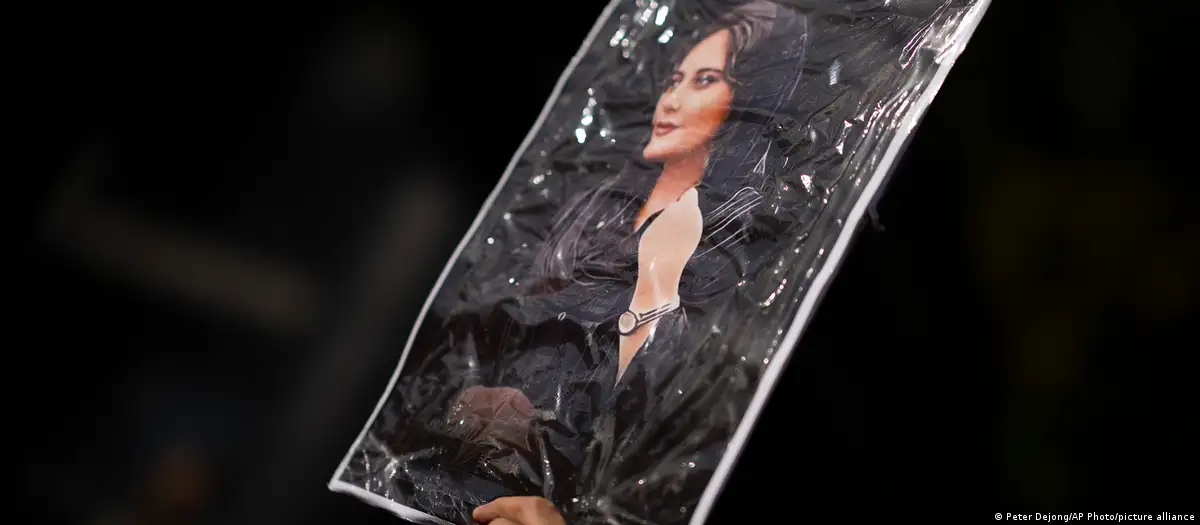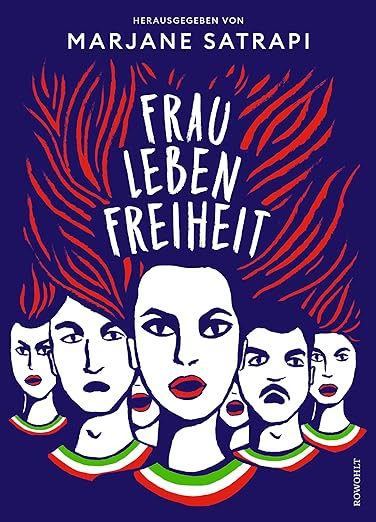The making of a revolution

In September 2022, Mahsa Jina Amini, a 22-year-old Kurdish woman, was visiting Tehran, the Iranian capital. On 13 September, she was arrested by the morality police. The grounds? Her headscarf, they claimed, did not meet clothing regulations – an everyday occurrence in Iran. The morality police, introduced by President Mahmoud Ahmadinejad (2005-2013), aims to monitor whether clothing adheres to supposedly Islamic rules, whether certain standards of behaviour are being maintained, and much more. Violations of the rules can be met with warnings, fines, or even imprisonment. The choice of punishment is often arbitrary.
On the day in question, the inspectors, or police, to whom the young woman was handed over, opted for brutal violence. Amini died. The authorities and the regime both denied responsibility, trying to lie their way out of the situation, as is so often the case. But this time it didn't work. The rupture between the people and the regime was beyond repair.
Polls and the rejection of pseudo-elections, which see any genuine opposition figures eliminated in the preliminary stages, suggest that over eighty percent of Iranians now reject the regime.

What caused the spark?
Amini's death was followed by protests and demonstrations across the entire country and at every level of society. As in previous decades, the regime responded with sheer violence. Hundreds were killed, thousands imprisoned, and others were sentenced to death.
But aside from the spark that kindled the flame on 13 September, how did the country arrive at a situation that is being described as a 'revolution' by opposition figures both at home and abroad? It is a complex story of social and political elements and events which have increasingly come to a head since the 1979 Islamic Revolution.
Bestselling author and cartoonist, Marjane Satrapi (of Persopolis fame), who lives in France, has worked with a group of illustrators and writers from numerous countries, not just Iran, to compile a new book, Woman, Life, Freedom, which has just been published by Rowohlt. In the book, she sets about examining in short episodes both the current situation in the country and the background that preceded it.
The result is terrific. What emerges is a graphic episodic novel with characters which are in part true-to-life, making their way through the depths of present-day Iran and offering easily accessible glimpses for people who still know little about the country, but which also bring new aspects to the fore for those who already know Iran.

Time for a human rights deal in Iran
Following the recent nuclear agreement, Iranians are hoping not only for a boost to their country's economy, but also for improved rights. In this interview, Nobel Peace Prize laureate Shirin Ebadi explains why the time has come for the West to focus on the human rights situation in Iran. By Sharam Ahadi and Mitra Shodjaie
A deeply intrusive state
They illustrate the dynamics of the predominantly female-led movement opposing a regime which has, for a long time, been fighting solely for its own hold on power, and in doing so making a mockery of the Islamic values it parades around before it.
Alongside brief stories of people executed by the regime for wanting to exercise their democratic rights, there is also a teardown of recent history, as well as spotlights on the mechanisms of censorship and propaganda.
At the same time the graphic novel includes a breakdown of different social groups and the splits that exist between them, as well as neat insights into the functioning of elements of the regime, from the Supreme Leader to the economic superiority of the Revolutionary Guard Corps, to the paramilitary troops tasked with protecting the regime – which, incidentally, the media have taken to calling 'repression forces' as opposed to 'security forces', a much more fitting description of their role.
We see once again how simple things become revolutionary acts, with the power to put one's life at risk, be it women uncovering their hair, couples holding hands, or friends looking to meet up for a beer and some good music.
All these things are forbidden. Ultimately, it is these persistent and profound intrusions into people's private lives that have led to a rupture and ensured that the regime is increasingly isolated in its own country, forced to hide behind its private army and a gigantic propaganda and surveillance machine.
This is a regime that will not stop short of poisoning schoolgirls who perform small acts of protest at school – even if it is something as minor as writing a slogan on a blackboard.
Following the die-down of the first big demonstrations around the end of 2022, Iran has largely disappeared from the Western media – such are the dynamics of the attention economy. One could be forgiven for thinking that yet another uprising in the country had failed, crushed and shot down by the regime, and that its well-worn tactics of repression and intimidation continue to work.
Yet this would be incorrect. In contrast to the student uprisings of 1999, or the Green movement of 2009, much has changed. There is now a younger generation who has known nothing but the narrow strictures imposed by the country, the poisoned atmosphere, the constant restrictions, and is connected to the rest of the world and its freedoms via the Internet. This generation is completely lost to Khamenei, Raisi and co.
It is a generation that has earned the respect of its parents and grandparents within a very short period, because it continues to fight on, undaunted. It builds low-level protest into its everyday lives and tells the world about it via social media. All of this is echoed in Satrapi's book, which counts the historian Abbas Milani and the political scientist Farid Vahid among its contributors.
"The regime will fall, because it died long ago in the minds of the people," Satrapi says. One can only hope she's right.
Gerrit Wustmann
© Qantara.de 2023
Translated from the German by Ayca Turkoglu
Marjane Satrapi, "Frau, Leben, Freiheit", published in German by Rowohlt